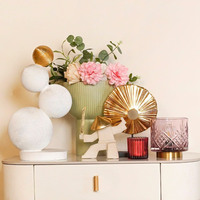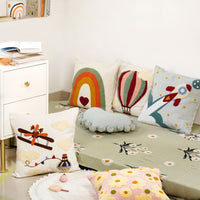Imagine coming home after a long day and walking into a space that’s entirely yours. Your decor, your rules, your sense of calm. Now, picture a child experiencing that same sense of comfort, safety, and ownership in a room that reflects who they are. Just like adults, children thrive when they have a space to call their own.

Psychologists agree that personal space helps in developing a sense of independence and emotional security. A study published in the Journal of Environmental Psychology notes that children between six and seven years of age begin to understand the importance of boundaries and personal privacy. This age is often considered the right time to give children a room of their own. It’s not just about walls and furniture but about helping them build confidence, emotional resilience, and self-expression through everyday living.
The Role of Interiors in Growth and Development
A child’s room is more than just a sleeping area. It can be a launchpad for imagination, a classroom for responsibility, and a sanctuary for rest. Thoughtful design choices, from wall colour to the placement of furniture, can encourage learning, creativity, emotional wellbeing, and even social skills. Let’s explore the elements that truly make a child’s room a nurturing space.
1. Colour Psychology: More Than Just Paint
Colour plays a powerful role in shaping a child’s mood, behaviour, and cognitive development.
Warm colours like yellow, peach, and light orange create a cheerful and energetic atmosphere that encourages play and creativity.
Cool colours like soft blue and pastel green help calm the mind and are ideal for bedtime routines.
Neutral colours can be used as a base to allow for seasonal updates or child-chosen accents.
The right colour scheme can enhance concentration during study time, reduce anxiety, and help establish a more predictable routine by subtly cueing the body and mind into specific states like focus or relaxation.
2. Natural Light and Nature-Inspired Elements
Sunlight plays a crucial role in regulating sleep-wake cycles, improving mood, and increasing energy levels. Natural light in a child’s room helps them stay connected with the day’s rhythm and improves alertness and concentration.
Incorporating natural elements can make the room more inviting and restful. Think potted plants, wooden furniture, or nature-inspired wallpaper. These elements create a serene environment and instill a connection to the natural world, which is especially beneficial in urban homes where outdoor time is limited.
3. Organisation Builds Responsibility
A well-organised space teaches children about responsibility and structure. When every toy, book, and belonging has a designated place, kids learn to clean up after themselves and value what they own.
Consider open shelves at eye level, labelled bins, or colourful storage baskets. These not only make tidying up more manageable but also give children visual cues about where things go, helping build lifelong organisational habits.
4. Encouraging Creativity Through Play and Decor
Imagination is at the heart of childhood development. Pretend play is not just fun; it’s crucial for emotional intelligence, problem-solving skills, and social understanding.
Adding pretend play sets, DIY activity corners, or even interactive wall art can help spark creativity. Whether it’s a mini kitchen, an art corner, or chalkboard walls, these features encourage children to express themselves, explore new ideas, and invent their own little worlds.
5. Comfort and Safety First
A child’s room should be a secure and comfortable environment. Prioritise furniture and decor made from non-toxic, child-safe materials. Rounded edges, anti-slip rugs, and stable storage units are essential to reduce the risk of accidents.
Comfort also comes from soft furnishings like breathable bedding, cozy cushions, and blackout curtains for restful sleep. Creating a sensory-friendly atmosphere through textures, warm lighting, and noise control can contribute significantly to a child’s sense of safety and well-being.
6. Building Confidence Through Ownership
Letting children participate in setting up their room gives them a sense of control and autonomy. Whether it’s choosing the bedsheet pattern, the wall stickers, or the colour of their table lamp, these small decisions can go a long way in building self-esteem.
When children feel their preferences are respected, they become more self-assured and emotionally secure. The room becomes a space they’re proud of, encouraging them to take better care of it.

7. Multi-Functional Zones for Balance and Structure
A well-zoned room teaches children how to balance different aspects of life. Separating areas for sleeping, studying, and playing allows them to transition smoothly between activities without overlap or confusion.
A study nook with a small desk and good lighting can encourage reading and homework routines.
A play area with accessible toys and creative tools invites exploration.
A cosy rest corner with minimal distractions supports relaxation and sleep.
Clearly defined zones create routine and help children associate certain behaviours with specific spaces.
8. Seasonal and Flexible Styling
Children’s interests evolve quickly. Refreshing their space seasonally or during special occasions keeps things exciting and helps them stay engaged with their environment.
Rotate wall art, add birthday-themed decor, or bring in a festive corner for Diwali or Christmas. This keeps the room visually interesting and encourages anticipation, planning, and storytelling skills that aid emotional growth.
9. The Role of Personalisation in Emotional Development
Every child is unique, and their space should reflect that. Personalisation, whether through monogrammed cushions, framed artworks, or photo displays, gives a child a sense of identity and belonging.
Displaying their achievements, crafts, or drawings on a feature wall can reinforce a growth mindset. It shows them that their efforts are seen, valued, and celebrated, fostering confidence and a sense of pride.
10. Tech-Free Spaces for Mental Clarity
While technology is a part of modern life, a child’s room should have some tech-free zones to promote real-world interaction and rest. Avoid placing screens near the bed or study area to limit distractions and ensure healthy sleep patterns.
Instead, opt for interactive but non-digital alternatives like puzzles, building blocks, or reading nooks. This approach helps with attention span, creativity, and emotional regulation.
The Most Meaningful Spaces Are Built with Care and Observation
Designing a child's room is not about chasing trends or buying the most expensive furniture. It’s about creating a space that supports who they are and who they are becoming. While interior design principles offer guidance, the most nurturing rooms come from a parent’s ongoing observation and understanding of their child’s unique needs, quirks, and dreams.
Children need more than colourful walls and toys. They need environments that encourage them to express, explore, and evolve. And when their room becomes a place where they feel safe, inspired, and understood, it becomes more than just a room, it becomes a part of their journey.
So, whether you’re setting up a brand-new room or refreshing an existing one, start with what your child needs today and be ready to grow with them tomorrow.
























